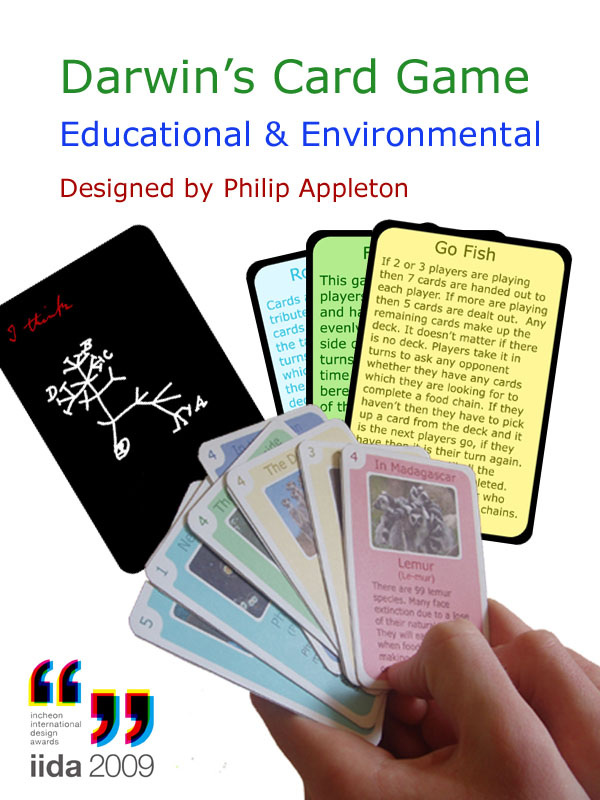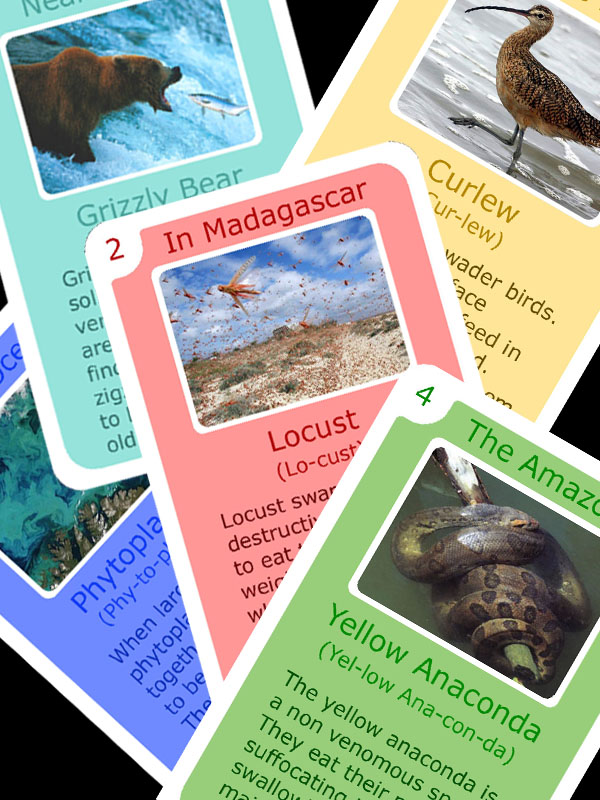
Darwin's Card Game by Philip Appleton from uk
designer's own words:
2009 marks 150 years since the publication of Charles Darwin’s ‘The Origin of Species’ and the theory of the survival of the fittest. Darwin’s card game has been designed to provide children with entertainment, social interaction and to educate about the fragility of the animal kingdom whilst subtly hinting at mankind’s damaging effect on the earth. There are seven different games to play which are based upon classic children’s card games such as go fish. The card game has the same amount of cards in it as a regular deck of cards.
Up to ten people can play at one time. Children learn about ten different food chains whilst also developing memory skills, attention spans and numerical skills. As well as learning about mankind’s effect on the environment children are given the chance to appreciate the brutality of the animal kingdom, for example an Arctic fox eats a baby stellar sea lion. The back of the card is an image of Darwin’s tree of life which aims to link in the theory of evolution. The ten food chains are located in different parts of the world, from Alaska to the Amazon Rainforest, from the Kalahari Desert to the British Countryside.
Made from a polypropylene film the cards have the ability to be up-cycled. The game introduces children to a material that they are likely to have a lot of contact with throughout their lives as wood pulp is expected to become less and less common. The simplicity of the game allows other subjects such as evolution to be designed to teach children (or adults) many different topics.
Views of the front and back of the cards
 A selection of the 50 cards
A selection of the 50 cards